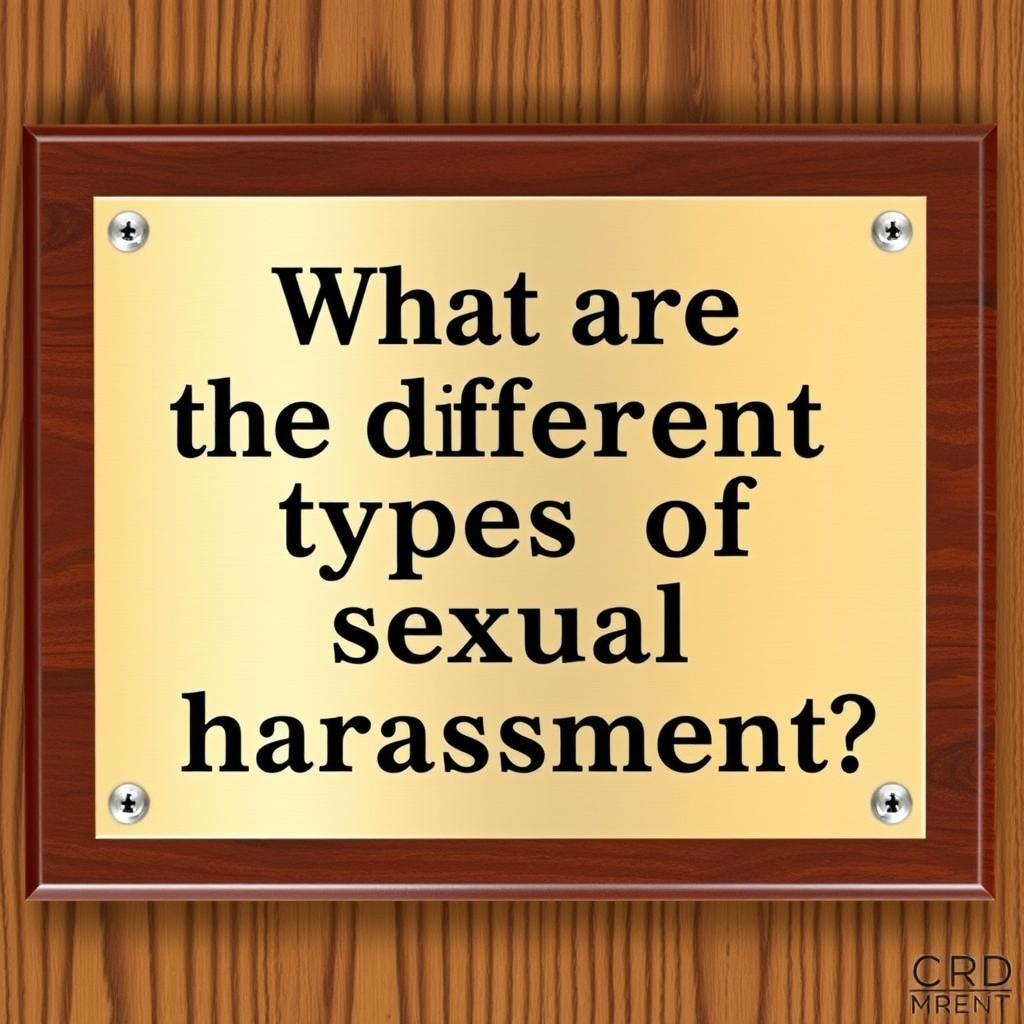Understanding the Different Types of Sexual Harassment
and How Companies Should Respond

Sexual harassment in the workplace is a serious issue that affects employees' well-being, productivity, and overall work environment. Recognizing the different types of sexual harassment is the first step in preventing and addressing it effectively. Companies must take swift action when claims arise, as failing to do so can lead to severe legal, financial, and reputational consequences. In this guide, we’ll break down the forms harassment can take, outline how organizations should handle complaints, and highlight the risks of ignoring such claims.
The Different Types of Sexual Harassment You Need to Know

Sexual harassment isn’t always overt—it can take subtle or indirect forms. Understanding the different types of sexual harassment helps both employees and employers identify and prevent inappropriate behavior. Here are the primary categories:
1. Quid Pro Quo Harassment
This is one of the most recognizable forms of harassment, involving an exchange of sexual favors for professional benefits. For example, a supervisor might imply that an employee will receive a promotion only if they comply with unwanted advances. This type of harassment is explicitly illegal under workplace laws.
2. Hostile Work Environment
A hostile work environment arises when inappropriate behavior—such as sexual jokes, offensive comments, or unwanted physical contact—makes the workplace intimidating or uncomfortable. Even if the behavior isn’t directed at a specific person, it can still qualify as one of the different types of sexual harassment.
3. Verbal Harassment
This includes unwelcome sexual comments, suggestive remarks, or persistent questions about someone’s personal life. Catcalling, using demeaning nicknames, or making inappropriate jokes all fall under this category.
4. Non-Verbal Harassment
Not all harassment involves spoken words. Leering, inappropriate gestures, or displaying sexually explicit images in shared workspaces are examples of non-verbal harassment that contribute to a toxic environment.
5. Physical Harassment
Unwanted touching, hugging, or other physical contact without consent is a clear violation. This type of harassment can escalate quickly, making it critical for employers to address complaints immediately.
6. Cyber Harassment
With the rise of digital workplaces, harassment can occur online. Sending explicit messages, sharing inappropriate content, or making suggestive comments on professional platforms all constitute cyber harassment.
Recognizing these different types of sexual harassment ensures companies take the right steps to protect employees.
How Should a Company Handle Sexual Harassment Claims?

Once a company learns of harassment allegations, it must act decisively. Mishandling complaints can worsen the situation and expose the organization to lawsuits. Here’s a structured approach to addressing claims:
1. Establish a Clear Reporting Process
Employees should know how to report harassment safely. Provide multiple reporting channels (HR, a confidential hotline, or a third-party investigator) to ensure accessibility.
2. Take Every Claim Seriously
Never dismiss an allegation as trivial. Even if the behavior seems minor, it could be part of a larger pattern. Investigate all complaints promptly.
3. Conduct a Thorough and Impartial Investigation
Assign an unbiased investigator to gather facts, interview witnesses, and review evidence. Maintain confidentiality to protect all parties involved.
4. Take Appropriate Action
If harassment is confirmed, the company must enforce consequences—whether that’s disciplinary action, termination, or legal measures. Ensure the victim feels supported through counseling or workplace adjustments if needed.
5. Provide Training and Prevention Programs
Regular workshops on the different types of sexual harassment help employees recognize inappropriate behavior and understand reporting procedures. Prevention is always better than damage control.
What Are the Consequences of Not Addressing Sexual
Harassment Claims Immediately?

Ignoring harassment allegations—or delaying action—can have devastating repercussions for both employees and the company. Here’s what could happen:
1. Legal Repercussions
Failure to address harassment can lead to lawsuits under laws like Title VII of the Civil Rights Act. Companies may face hefty fines, settlements, and court-ordered policy changes.
2. Financial Losses
Legal battles, increased insurance premiums, and compensation payouts drain company resources. Additionally, productivity drops when employees feel unsafe.
3. Damage to Reputation
News of unaddressed harassment spreads quickly, harming the company’s brand. Clients, partners, and top talent may distance themselves from an organization with a toxic culture.
4. Low Employee Morale and High Turnover
When employees see harassment going unchecked, trust in leadership erodes. High-performing staff may resign, and recruitment becomes harder as job seekers avoid problematic workplaces.
5. Escalation of Harassment
Unchecked behavior often worsens. A minor incident can escalate into severe misconduct, leading to more victims and greater liability for the company.
Understanding the different types of sexual harassment is crucial, but so is taking immediate action when violations occur. A proactive, zero-tolerance approach protects employees and the organization.
Final Thoughts
Sexual harassment is a persistent workplace issue that requires vigilance and accountability. By educating employees about the different types of sexual harassment, implementing strong reporting mechanisms, and enforcing consequences for misconduct, companies can create safer, more inclusive environments. Ignoring claims isn’t just unethical—it’s a costly mistake with lasting consequences. Prioritize prevention, responsiveness, and transparency to foster a workplace where everyone feels respected and valued.